Children and Families
Rescuing youthful identities
August 14, 2014

L.A. County is working hard to repair the finances of foster kids whose credit has been abused by adults.
Minors are ineligible for credit cards and car loans in California. Yet there they were—the names and Social Security numbers of more than 100 Los Angeles County foster children on credit reports dating back years.
The discovery, part of a 2010 pilot survey on identity theft in the foster care system, was a wake-up call, recalls Rigoberto Reyes, chief of investigations for the county Department of Consumer Affairs, which helped conduct the survey.
Some of the most vulnerable children in the county were being exploited so duplicitous adults could obtain apartments, vehicles, jobs, cell phones, gym memberships, health care, even mortgages and bail money.
“In one case, a prostitute had gotten hold of the foster kid’s information and was using the kid’s name every time she was arrested,” Reyes says. “To clear it, we had to get the kid a letter from the Department of Justice’s identity theft registry.”
The study, launched in the wake of a 2006 state law aimed at curbing identity theft in the foster care system, has since grown in Los Angeles County into a protection effort unmatched anywhere else in the state.
Now, with a number of legal and procedural kinks worked out of the system, Consumer Affairs has formally teamed up with the county Department of Children and Family Services to add routine credit checks to the list of services the county performs for its foster children, scouring credit databases for children’s names and clearing them as needed.
“Identity theft is rampant when it comes to foster children,” says Sasha Stern, an attorney with the L.A-based Alliance for Children’s Rights, which provides free legal services to children in out-of-home care. “They move so much, and their personal information is transferred so many times that they’re just more vulnerable. So what the county is doing is great.”
Working through a secured web site with the credit bureau Experian, the two county departments this year have begun routinely checking and clearing the credit records of every foster child over 16 in the county system, quietly troubleshooting one of the most common—and pernicious—obstacles to the children as they age out of the system and attempt to start lives as independent adults. By November, the county also will begin working with the two remaining major credit bureaus, Equifax and TransUnion.
“Imagine trying to rent an apartment, or buy a used car, if you’ve been stuck with bad credit,” Reyes says. “And now imagine trying to do that if you’re a foster kid, dealing with all the worries foster kids have when they’re being emancipated.”
“Often these kids don’t find out there has been a fraud until they’re denied a student loan or a car loan,” adds DCFS Division Chief Harvey Kawasaki. “Or until an employment agency does a credit check on them as a prospective employee, and then decides not to hire them.”
Although California passed a law in 2006 aimed at clearing foster kids’ credit records, implementation has been slow because of procedural and funding woes. Most counties still do little more than crosscheck the names of their foster children with credit databases, leaving the children themselves to rectify any problems.
But L.A. County has its own in-house consumer affairs staff, as well as about half of the foster children in California. That, Reyes says, is why L.A. was chosen for the 2010 pilot, which checked the records of about 2,110 foster children.
In the last four years, Reyes says, the county has checked the credit of 8,126 foster children, finding that about 10 percent of them had open accounts under their names. That’s significantly higher than the prevalence of identity theft among adults in the general population, which is about 7 percent, according to a 2012 federal study.
“It’s not a lot of kids, but those who do have problems have multiple, multiple problems,” Reyes says.
The fraudulent accounts seemed more likely to be opened by relatives or acquaintances of the children than by their foster families, Reyes says, and most involved credit cards, utilities or medical care. “For example,” he says, “we had one where the sister delivered a baby in the emergency room and used the foster kid’s ID because she didn’t have insurance, and our kid got hit for the bill.”
Some cases also point to lax quality control among lenders. One recent survey of names, for instance, turned up more than 50 credit card accounts that had been opened at one major bank under foster kids’ identities, presumably with social security numbers that would have identified them as minors.
So far, no fraud has been prosecuted through the program. This is partly because the checks until now have involved thousands of names at a time, with an emphasis on clearing up the credit records, as opposed to punishing wrongdoers. But abuses are expected to get more scrutiny as caseloads lessen.
Under the formalized system underway this summer, the names and Social Security numbers of each foster youth will be compared twice with the credit bureaus’ records—once right after the children turn 16, and again, shortly before they turn 18. Consumer Affairs will then clear up any problems.
“About 175 of our foster kids turn 16 every month,” Reyes says. “So even assuming that 10 percent have problems, that’s fairly manageable.”
Even so, he warns, separating fraud from human error isn’t easy. Sometimes the record is as simple as confusing a son’s name with a father’s, or clearing up a credit bureau’s mistake.
In the case in which a $217,000 mortgage was found on a foster child’s credit record, for instance, investigators couldn’t determine whether the loan had deliberately been taken out under the youth’s name or whether the credit bureau had simply erred.
One of the biggest hurdles authorities face, Reyes says, is the reluctance of foster children to press charges against their betrayers.
“We had one where the father was using the kid’s information, and when the city attorney sat down with the kid and told him the process, he stopped returning our phone calls—he didn’t want to confront the father. He was afraid of the guy.
“That vulnerability is one of the hardest things about these cases, but also why they’re so important to resolve.”
Posted 8/14/14
Picking up pace to protect kids
July 3, 2014
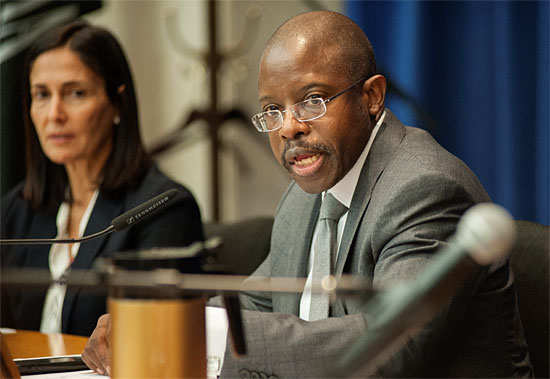
David Sanders and Leslie Gilbert-Lurie are moving from the blue ribbon panel to a new transition team.
As Los Angeles County prepares to hire its first-ever child protection czar to lead an ambitious new oversight program, efforts to build that system accelerated this week with the appointment of a high-profile transition team to help get the initiative off the ground.
The nine-member team approved by the Board of Supervisors on Tuesday includes a mix of newcomers as well as several veterans of the Blue Ribbon Commission on Child Protection, which earlier this year urged the county to create an Office of Child Protection as the cornerstone of a wide-ranging package of reforms.
The transition team is charged with sifting through more than 40 of the commission’s recommendations to help prioritize which the county should implement first.
David Sanders, who chaired the blue ribbon panel and also will be a member of the transition team, said a big part of the interim group’s job will be to make sure that proposed reforms receive the necessary follow-through.
“We really have concerns about that…We didn’t want to just add a new series of recommendations,” said Sanders, a former head of the county’s Department of Children and Family Services who now is an executive vice president of the Seattle-based Casey Family Programs.
The team, which is meant to disband once the Office of Child Protection is up and running, will also help recruit and shape the job description for the person who will run the new agency.
In addition, the transition panel is charged with making some critical assessments in the days and weeks ahead. For one thing, it will evaluate the performance—and potential for expansion—of the county’s network of so-called medical hubs, where the physical health of youngsters coming into the system is evaluated. And it will wade into the sometimes contentious issue of how best to use county nurses to help social workers conduct frontline investigations of suspected child abuse.
The transition team will provide monthly updates to the Board of Supervisors beginning on August 5.
The reforms now being implemented come after the horrific death last year of Gabriel Fernandez, an 8-year-old Palmdale boy was left by social workers in the care of his mother and her boyfriend despite multiple reports of abuse, neglect and torture.
Even before the blue ribbon commission began its work, current DCFS head Philip Browning had embarked on a reform mission from within the department, including expanded training, a plan to hire more staff and reduce caseloads, creation of a foster care search engine, and a new data-driven approach to making the agency function more effectively. Those efforts continue as the transition team’s work gets underway.
In addition to Sanders, transition team members who also served on the blue ribbon commission include Andrea Rich, Leslie Gilbert-Lurie and Janet Teague.
The newcomers include Dr. Mitchell Katz, the county’s director of Health of Services, along with former Los Angeles County District Attorney Steve Cooley, Supervising Dependency Court Judge Margaret Henry, Patricia Curry of the county Commission on Children and Families and Antonia Jimenez of the county’s Chief Executive Office.
Sanders said the group represents a rich mix of professional knowledge and L.A. County experience.
“I couldn’t be more excited,” he said. “I think it’s really a remarkable team.”
Posted 7/3/14
A Cinderella moment
March 27, 2014

Foster teen Lisa Slayton gets a makeover at last year's Glamour Gown extravaganza. “It was like a blessing,” she says. “Fabulous.”
It was an invitation that another teenager might have taken for granted. Alexx Solyom had been asked to her first winter formal, a masquerade ball in January at Pasadena’s posh Brookside Country Club. It was her senior year. The entire Class of 2014 would be there.
“But I’d been in foster care for about two and a half years,” the 17-year-old said, “and I was living from foster placement to foster placement. I couldn’t afford a dress—I was in a group home and there weren’t enough funds.”
Enter Pam Bingham, the court-appointed special advocate for Alexx, who knew about a program just for girls in her situation. Within days, the teenager was heading home with a free, brand new, floor-length dress.
Their fairy godmother? Glamour Gowns, a collaboration between CASA of Los Angeles and hundreds of volunteers—many veterans of show business—who believe that girls in the foster care system should, like any girl, get to feel like Cinderella on prom night.
“It was a black and white dress, a long dress with crystals going around the front,” says Alexx, recalling how Bingham had kept it at her house in San Gabriel until the big night so it wouldn’t end up being damaged or vandalized in the group home.
“I felt like a princess.”
Now in its 13th year, Glamour Gowns is gearing up this week for its largest-ever Cinderella moment, an event that on Saturday will offer a free prom outfit and day of beauty to some 500 high school girls in foster care.
Initially launched by a handful of volunteers with a few dozen cast-off dresses, Glamour Gowns has since outfitted thousands of foster girls for proms, homecoming dances and winter formals. Its signature spring event, geared to prom season, has become such an annual extravaganza that the Los Angeles Convention Center now houses it.
Sponsors include: Chinese Laundry, which donates new shoes; Jenette Bras, which custom-fits each girl with appropriate foundation garments, and D.J. Bronson Inc., a Commerce-based apparel manufacturer that over the past five years has donated more than 5,000 new dresses—and, occasionally, tuxes—to grateful foster girls.
Meanwhile, members of I.A.T.S.E. Motion Picture Costumers Local 705, Costume Designers Guild Local 892 and Theatrical Wardrobe Union Local 768 donate their time, as do hair and makeup stylists.
“I know to some people it might sound frivolous, but it absolutely isn’t,” says Jennifer Parker-Stanton, a former costumer for film and TV who has been involved in nearly every Glamour Gowns event since its founding.
More than 28,000 children are under the jurisdiction of the dependency court in Los Angeles County and more than 17,000 live in foster care. Often, Parker-Stanton says, their caretakers can’t—or choose not to—afford “non-essential” yet emotionally important items like prom regalia. As a result, she says, girls in foster care often simply opt out of key adolescent milestones rather than risk more disappointment in a life that often is already painful.
“This is about self-esteem,” says Parker-Stanton, whose costuming work ranged from the TV series “Nash Bridges” to the Academy Award-winning “Million Dollar Baby”.
“The first time I did this, the girl I was working with looked in the mirror and said, ‘People say I’m pretty, but until now, I never thought so.’ And I thought, ‘All this time that I’ve spent running around, shopping for famous people, when you can change a life with just one dress.’”
“It’s a social experience that the girls never forget,” agrees Michael Williams, a veteran social worker with the Department of Children and Family Services who has seen at least five of his young clients transformed by the program. “Most of them have never gotten this kind of attention before. “
Anissa McNeil, a Glamour Gowns Committee member and CASA of Los Angeles board member, says the teenagers are often most surprised to see that the outfits are department store-quality merchandise, not hand-me-downs or seconds.
“They’re like, ‘You mean I get to keep this?’ And we say yes. ‘And it’s all new?’ Yes,” McNeil laughs. “One girl made me pinky promise one year that everything was free.”
McNeil says, the group makes sure no one leaves empty-handed.
“Last year, we had a plus-size young lady and she didn’t see any dresses she liked that were the right size, and you could just see her thinking, ‘Nothing ever works for me.’ She was saying, ‘Thanks for inviting me, I’ll just take a purse if that’s okay,’ when the seamstresses came in and…made a gown for her, right there on the spot. When she tried it on, and it fit like a glove, the look on her face—well, there wasn’t a dry eye in the house.”
McNeil says the event is particularly rewarding for her because she, too, spent time in foster care. “My mother had a nervous breakdown, and my brother and I became homeless when I was six,” she remembers. “Our grandmother raised us and became our legal guardian.”
Today, McNeil has a doctorate and a practice as an educational consultant, but remembers keenly the challenges that face foster children. She had to work two jobs in high school to pay for her prom dress, she says, and because she is over six feet tall, it had to be specially tailored. Then, on the big night, her date failed to show up.
“Hey, that’s what happens when you go for a playboy,” she recalls laughing. “But as my brother and I tell people, if you can overcome being homeless, you can overcome anything. I was determined to go, and I went by myself—in a gown that was long and blue and elegant.”
Posted 3/27/14
Where sex trafficking hits home
March 27, 2014
As the movement to combat the sexual trafficking of young people grows in California and across the country, Los Angeles County is mobilizing to address the problem where victims are all too frequently found: in foster care and group homes.
The Los Angeles County Board of Supervisors this week directed two county departments—Children and Family Services, along with Probation—to come back with recommendations on a plan to better train foster parents, group home operators and other caregivers, as well as county staff, to identify and respond to children and teens at risk of exploitation.
“Children in foster care and group homes are specifically targeted by pimps and gang members because the circumstances that caused them to be removed from their homes…often makes them especially vulnerable to sexual exploitation,” according to a motion by Supervisors Mark Ridley-Thomas and Don Knabe.
Rachel Thomas, a sex trafficking survivor who now works to educate people about the problem, told supervisors at their Tuesday meeting that it’s essential to teach caregivers and others to recognize the signals.
“The sad reality is that over half of all child exploitation victims are from the child welfare system,” Thomas said. “Most of them are not being kidnapped randomly. They’re being lured. There’s a grooming process, a recognizable honeymoon phase, with recognizable signs.”
Education, she said, “is the best inoculation.”
Philip Browning, director of the county Department of Children and Family Services, agreed.
“We have thousands of foster parents, relative caregivers, group home providers that every day come into contact with individuals who are involved in, or potentially could be involved in, commercial sex trafficking. Without education, I don’t think we would be able to do nearly what is needed,” Browning said.
The board directed the departments to come back with a report within 30 days. Along with the motion by Ridley-Thomas and Knabe, supervisors approved an amendment by Supervisor Zev Yaroslavsky to support state funding for efforts throughout California, including Los Angeles County.
The County Welfare Directors Association of California is pushing for a wide-scale initiative—incorporating training programs and services for child victims—that it hopes will ultimately be funded by the state. The organization estimates that running such a program in California would cost $40.6 million in the first year and $28.5 million annually after that.
Yaroslavsky said it will be essential for Los Angeles County to receive its share of state funds in order to enact effective programs here without cutting into other important services.
Posted 3/27/14
From insider to investigator
August 2, 2013
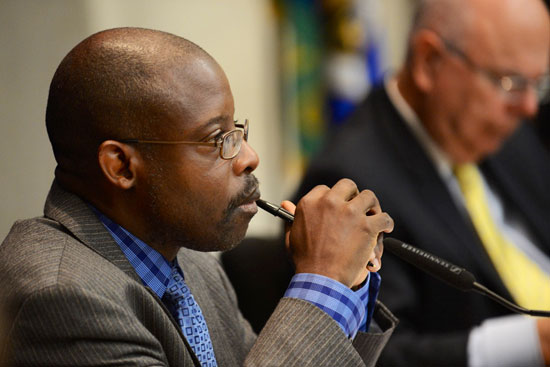
David Sanders, chair of the new child protection commission, says his DCFS years give him a unique perspective.
The director of Los Angeles County’s Department of Children and Family Services was on the hot seat. Social workers in the agency had failed to protect a young boy from the fatal blows of his mother, despite being aware of earlier abuse allegations against her.
“Let’s not kid ourselves,” Supervisor Gloria Molina lectured the agency’s director, who’d been summoned before the board during its weekly meeting. “This is about people not doing their jobs.” Molina demanded that the director act more forcefully to fire his “ill-trained” workers.
That kind of dressing-down easily could have occurred on any number of recent days, as the Board of Supervisors has confronted the death of 8-year-old Gabriel Fernandez, who was allegedly tortured by his mother and boyfriend after a long history of abuse complaints. But the case that triggered Molina’s ire came in early 2004. And the director was not the current boss, Philip Browning, but David Sanders, who resigned in mid-2006.
Among the many who’ve held the top position at DCFS, Sanders was the only one to leave without being shown the door by the supervisors, his reputation intact. Now he’s voluntarily back in a new high-profile job; on Thursday, he was selected as chairman of the Blue Ribbon Commission on Child Protection by his nine colleagues during the panel’s inaugural meeting.
Each of the county’s five supervisors appointed two members to the commission, which was created on a split vote of the board to investigate systemic failures in L.A.’s child protection system. Sanders, selected by Supervisor Mark Ridley-Thomas, is the only panelist with a true insider’s perspective on the pressures and dynamics within the huge agency entrusted with the welfare of nearly 35,000 children. (Click here for a look at the other appointees.)
“I know what it’s like to have a crisis come up and turn the department in another direction,” Sanders said by phone, while making a connecting flight in Denver to his home in Seattle, where he’s now an executive with a non-profit. He says he’s “acutely aware” of not placing unnecessary demands on DCFS that would distract the agency from its primary mission of protecting children. The commission’s examination, he says, will go far beyond DCFS to investigate the performance of the broader network of agencies with a role in child safety, from law enforcement to the schools.
Since DCFS’s creation in 1984, arguably no director has had a bigger impact than Sanders—one that continues to shape the agency’s philosophical and financial strategy towards both foster care and family reunification.
In the past, the agency would receive tens of thousands of dollars in state and federal funds for every child placed in foster care. Believing this created a financial incentive to remove at-risk youngsters from their families, Sanders championed what he described at the time as “a revolutionary” funding model in which the agency would receive a flat amount to spend not only on foster care but on new services and programs to keep families together.
The so-called waiver, which took effect in 2007, has been widely praised for dramatically reducing the number of children in foster care. But in recent years concerns have surfaced over whether this shift in funding has created another kind of incentive, keeping kids in potentially dangerous family situations so DCFS can use the money it saves on foster care for other departmental priorities.
Asked how he’d approach having to investigate the impact on DCFS of one of his greatest legacies, Sanders said: “I don’t feel reluctance to attack any policy that isn’t relevant to the circumstances today…I don’t think anything is sacred, whether it was stuff I thought was important 10 years ago or today. My belief is that there is a fundamental responsibility to assure children are safe.”
Although it’s been seven years since Sanders’ departure, he says he still works closely with his former agency—one that he’s now expected to approach as an independent fact-finder.
Sanders is an executive vice president of the Seattle-based Casey Family Programs, founded in 1966 to focus on foster care and improving child welfare systems throughout the country. He says the non-profit organization has “done a number of initiatives with the county,” including helping Browning and other DCFS officials rewrite the agency’s policy manual. “I have a passion for the work in Los Angeles,” he says.
Sanders says his selection as chairman of the child protection commission was “very humbling,” especially considering “the incredibly impressive group” that’s been assembled by the Board of Supervisors. He says the commission “isn’t going to tolerate a repeat” of earlier investigative efforts in which recommendations for reform went unheeded.
“This,” he says, “is a group that is going to be very action oriented.”
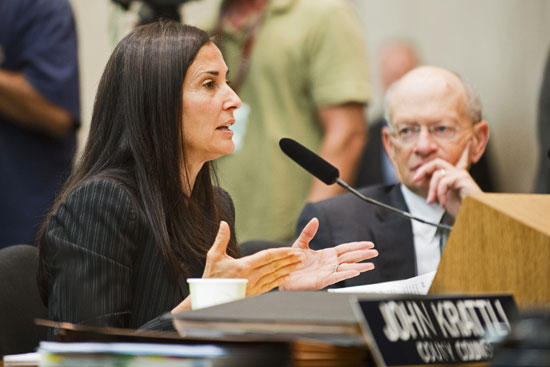
Child advocate Leslie Gilbert-Lurie and retired Judge Terry Friedman were appointed by Supervisor Yaroslavsky.
Posted 8/2/13
Dad pride
June 13, 2013
As we prepare to celebrate our nation’s dads this weekend, how’s this for a heroic (not to mention exhausting) feat of fatherhood? For three consecutive months in mid-2005, Los Angeles County social workers delivered three tiny foster children to a couple who’d once tucked away any hope of being parents.
The oldest of the children was 18 months. The middle one was 4 months. And the youngest had been in the world for just 3 days.
“We made it through that glorious summer, a scorcher without air conditioning,” says John Ireland, as he recalls the diapers and feedings and joys of it all. “It was such a tremendous, intensive parenting experience”—one made even more complicated by the demographics of the household. For there were two men of the house, “Dad” and “Daddy.” John is married to Duncan Ireland, his partner of 20 years.
Like many gay men, John, 42, says he’d come to believe the subtle and overt messages in society that parenthood was out of reach for people like him. His own parents, he says, “let go” of their hopes of having grandchildren through him after he “came out.”
But all that changed, John says, after he and Duncan talked to social workers from L.A. County’s Department of Children and Family Services and the Southern California Foster Family & Adoption Agency during an informational fair at Plummer Park in West Hollywood.
“We were not only welcomed, we were actively recruited,” John says, noting that he and Duncan, 40, promptly underwent nine training sessions for certification as foster parents. That training included an emphasis on family transparency. “What they need is honesty. You don’t avoid any topics with a foster child,” says John, who was wed to Duncan in 2008, before California voters banned same-sex marriage through Proposition 8, which is under review by the U.S. Supreme Court.
In all, the couple provided foster care to four children, eventually adopting a sister and brother, now 8 and 5, respectively. “We would have adopted them all, if we could have,” says John, a consultant and fundraiser for non-profit groups who served as the stay-at-home dad while Duncan continued his law practice. Today, John helps lead an organization called Raise A Child, which works with the county and others to spread the word about opportunities for gays and lesbians to become foster and adoptive parents.
County child welfare officials know that some people may not approve of the government actively seeking gay and lesbian parents. But those officials say the county needs every willing and qualified adult possible to provide a safe and caring environment for the more than 16,000 foster youth who must be removed from dangerous homes.
“We need to recruit everyone who can help us”—including lesbian, gay, bisexual and transgender couples and individuals—says DCFS supervising children’s social worker Bryan Miller. “The LGBT community has been an underutilized resource for many years. We’re just catching up.” Miller says a UCLA study last year concluded that foster children do equally well when placed with gay, lesbian or heterosexual parents.
As for the critics, Miller offers this challenge: “If you’re going to complain, I want to see you at our next foster/adoption orientation.”
In recent years, the county’s foster care system has come under intense scrutiny and criticism for sometimes failing to protect the welfare of children living in group or individual homes. Just this week, the Board of Supervisors voted to end a decades-long relationship with Teens Happy Homes amid allegations of financial improprieties and child abuse detailed in the Los Angeles Times. But what rarely rises to the surface are the many profound and touching stories of success. As John explains: “These victories are small and only celebrated by those of us observing them happen.”
The experiences of John and Duncan, both as foster and adoptive parents, deserve a wider celebration.
As foster parents, John says, you’re trained to brace for the reality that the children you’ve grown to love may be reunified with relatives. That’s what happened with two of those first three youngsters to enter the couple’s life in rapid succession—Marisol and her infant brother, Isaías. Five months after coming to the Ireland home, the children were adopted by an aunt living near Staples Center in downtown Los Angeles. “We thought we’d never see them again,” John recalls.
When he and Duncan arrived at the aunt’s apartment, siblings in tow, she asked whether they had a keepsake photograph of the children and their foster parents. In fact, John had stashed a framed picture in their suitcase. He dug it out and handed it to her. To the men’s astonishment, she removed an image of the Virgin Mary from a wall and replaced it with the new photo.
“You are part of their lives and we want you to be part of our family,” she told them, a vow to which she’s stayed true during the past eight years by inviting the couple to birthday parties and other special occasions. “That was the best thing for those children,” John says in hindsight. “It worked exactly as the foster system was meant to be.”
As for baby No. 3, Emma, the couple adopted her in late 2005, six months after she first came to their home. And she remained an only child for nearly seven years, until John got a mid-morning call while driving along Laurel Canyon Boulevard. “Pull over and turn off the car,” an excited social worker advised. Emma’s 4-year-old brother, she reported, had entered the foster care system. Little Giovanni, who joined the family as a foster child in July, 2012, was adopted last month.
“He was so excited about being adopted,” John says, “that for two weeks when he woke up in the morning he’d ask: “Am I still a foster kid?” I’d tell him, ‘Nope, you’re no longer a foster kid.”
John is under no illusions that his family choices will be widely embraced, especially by those outside “the bubble” of Los Angeles. Not only are there two dads, but they’re white with African American children. “We don’t walk into a restaurant undercover,” he joked.
Asked what unique challenges gay couples confront, John says: “The biggest challenge is helping our kids navigate a society that is very focused on us. The spotlight is trained on our families. It’s still very controversial in our culture for gays and lesbians to parent.”
“The hardest part,” he continues,”is when we go into public. The kids are old enough to see the looks or be posed the questions in school. ‘Why do you have two dads?’ We have to prepare them to answer those questions.”
Two weeks ago, he says, he and his husband took the youngsters to a gay pride festival in the Antelope Valley. Along the road to the fairgrounds were protest signs warning, “Homo sin. Turn back.”
“How do you prepare a 5-year-old or an 8-year-old for that? We tell them that people have the right to express themselves. Some people do not agree with our family. Some people do not like families with only one parent.…The truth is that every kid has something they can be picked on about. Kids need to be taught resilience.”
This Sunday, none of those questions or pressures will be in the air when John, Duncan and their two high-energy, toothy-grinned kids who love handball and running attend “The World’s Largest Gay Father’s Day Celebration,” which includes brunch and a children’s concert.
The event is sponsored by, among others, John’s Raise A Child group, the City of West Hollywood and the Pop Luck Club, an organization of gay dads, prospective dads and their families. John is the current president, with duties that include storing the club’s banners in his garage and making sure there’s plenty of Capri Sun juice boxes for monthly potlucks.
Says John: “I think I’m the luckiest guy in the world…besides my husband.”
Posted 6/13/13
Small step toward fixing a big problem
May 22, 2013
The Board of Supervisors this week gave the go-ahead for an immediate staff infusion to step up oversight of foster and group homes, as the county Department of Children and Family Services works to develop longer term, comprehensive strategies to correct long-running problems in foster care monitoring.
While no one contends that the seven new positions approved Tuesday would in themselves reverse years of breakdowns and concerns, the move was seen as a concrete step in the right direction.
“This is an attempt to do something about the problem by increasing the resources, human resources, that the department has to address this in a more pro-active and thorough manner,” said Supervisor Mark Ridley-Thomas.
Under questioning by Supervisor Zev Yaroslavsky, who proposed the staffing increase as part of a broader package of reforms approved last month, DCFS director Philip Browning said the unit responsible for such monitoring had lost 15 staffers over the past decade—a drop from 51 employees to 36.
“Frankly, staff cuts do have an impact,” he told supervisors.
He said the new positions in the department’s Out-of-Home Care Investigation Section “would assist us in ensuring that state-licensed foster homes and group homes are monitored to the same level as the foster family agencies.”
Browning emphasized that the move was not a “total solution,” and noted that broader solutions are still being developed.
According to a letter to supervisors from the county’s Chief Executive Office, the staffing expansion will enable “timely and comprehensive reviews” of allegations and incidents, and will make it possible to more quickly identify patterns that require county intervention.
The board’s action came following the disclosure of long-running allegations of impropriety within Teens Happy Homes, a foster family agency under contract to the county.
Posted 5/22/13
Want a happy camper? Be first in line
February 27, 2013
There’s a secret to getting your kid into a great summer camp: Sign up before spring.
Unfortunately, most parents remember that secret just as the school year is ending. But for those who do register early, Los Angeles County is a summer playground of options.
Here’s a sampling of what’s out there. Act quickly. Some already are selling out.
- Enrollment opened last week for the Los Angeles County Museum of Art summer art camp, and some weeks are already fully booked. Several are still open, though, with artist-led workshops for art-loving kids aged 6-13. The camp runs from 10 a.m. to 3 p.m. starting June 10, and proof of age is required. Tuition is $365 per week ($325 for NexGen members). Financial aid for art camp is also available. For more information, call 323-857-6512 or click here.
- Sign-ups also opened this month at the popular Summer Nature Camp at the Los Angeles County Arboretum & Botanic Gardens, which offers weeklong sessions of outdoor and indoor fun for children aged 5-10. The program runs from 9 a.m. to 3:30 p.m. with extended care from 8-9 a.m. and 3:30-5 p.m. if parents need it. Sessions start June 10 and run through the week of August 5. Tuition excluding extended care is $300 a week for Arboretum members and $335 for non-members. Half-day sessions also are available, and there’s a 10% sibling discount. For more information, call 626-821-4623 or click here.
- Another big crowd pleaser is the Adventures in Nature Day Camp at the Natural History Museum of Los Angeles County, which offers sessions in everything from fossil labs to filmmaking for kids in kindergarten through 8th grade. Registration opens March 1 for the weeklong sessions, which start June 24 and run through the week of August 5. Program hours are 9 a.m. to 3 p.m., with extended care from 8-9 a.m. and 3-5 p.m. if needed. Tuition excluding extended care is $250 a week for members and $300 a week for non-members. A limited number of scholarships are available. To sign up early, watch this space. For more information, call 213-763-3348 or click here.
- The Mountains Restoration Trust’s Discovery Nature Camp for little naturalists has some good news and some bad news. The bad news is that it will only be available for one week—the week of June 24—this summer, and there are only 18 available spaces. The good news is that if you’re reading this, you could be first in line. The camp, which operates out of a historic farmhouse in the Santa Monica Mountains, offers hands-on interaction with nature for children aged 8-12. Hours are from 9 a.m. to 3 p.m. and tuition for the week is $260. For more information, call project manager Susan Haugland at 818-591-1701 or click here.
- Nothing says summer in SoCal like Junior Lifeguards, but good programs can require some advance swimming prep. Registration for returning junior guards in the Los Angeles County Fire Department’s program starts March 4. This year’s program runs Monday through Friday from July 1 to August 2, with morning or afternoon sessions in crucial ocean skills for kids aged 9-17. Fee is $476 and financial aid is available. New registrants must show proof of age and pass a swim test. Experienced Junior Guards 16 and over can qualify for the department’s Cadet Program. For much more information, or to find the camp nearest you, call 310-939-7214 or click here.
- The surf and beach camps traditionally operated by the Los Angeles County Department of Beaches & Harbors are still on hiatus, due to budget cuts. But plenty of community beach programs have arisen to fill the gap in the meantime. For a list of community-based summer youth camps operated at local beaches, click here.
- Just keeping an eye out for kid-friendly outings? Check out SummerSounds at the Hollywood Bowl. A music festival designed just for little ones, SummerSounds features two concerts daily through July and August, at 10 a.m. and 11:15 a.m., plus arts and craft workshops, for kids 3-11. The music ranges from gospel to mariachi to reggae to traditional Filipino music—and it’s a bargain. Tickets aren’t on sale yet, but traditionally they have been $7 regardless of age and $5 for workshops. For more information as summer approaches, watch this space.
Posted 2/27/13
She’s No. 1 at First 5 L.A.
October 12, 2012
Los Angeles’ youngest children have a new friend in high places.
Kim Belshé, the former head of the state Health and Human Services Agency, has been named executive director of First 5 L.A.
“I really think that First 5 L.A. can be the leading voice in the state for improving outcomes for young children and their families,” Belshé said in an interview. She said she is looking forward to helping her organization “change the life trajectory of young children in Los Angeles County.”
Supervisor Zev Yaroslavsky, chairman of the First 5 board, praised Belshé as a prominent and accomplished leader who has what it takes to lead the children’s organization forward.
“She is one of the most respected leaders in health and human services in the state of California,” he said in a statement. “Kim is committed to First 5’s mission of improving the quality of life of all children 0-5, and she has the talent, intellect and skill to do this job.”
First 5 L.A. was created to oversee the county’s allocation of funds from Proposition 10, the Rob Reiner-supported initiative that imposed a 50-cents-a-pack tax on cigarettes to raise revenue to improve the lives of California’s youngest children.
In July, First 5 announced an ambitious plan to accelerate spending of the funds it has received. Nearly $400 million is now in the pipeline to fund anti-obesity efforts, along with health, dental and vision care services as well as an unprecedented project to house homeless children and their families.
In 2011, a scathing audit criticized the agency for moving far too slowly in spending its available funds. No malfeasance was found, however. The agency’s previous executive director, Evelyn V. Martinez, resigned in November, 2011.
Belshé, 52, a San Francisco native, currently is senior policy advisor with the Public Policy Institute of California. She has a bachelor’s degree in government from Harvard and a master’s in public policy from Princeton.
She begins work with First 5 early next month.
Posted 10/12/12




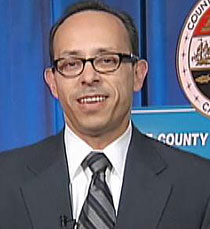


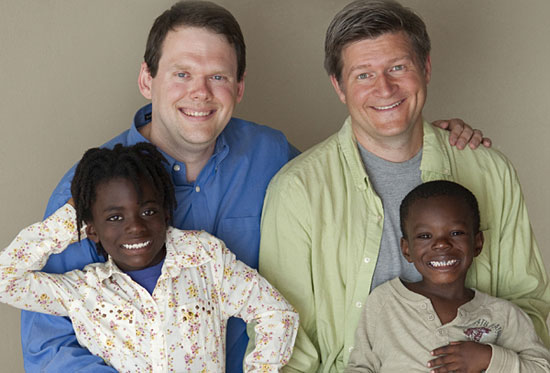
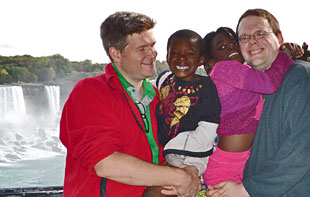


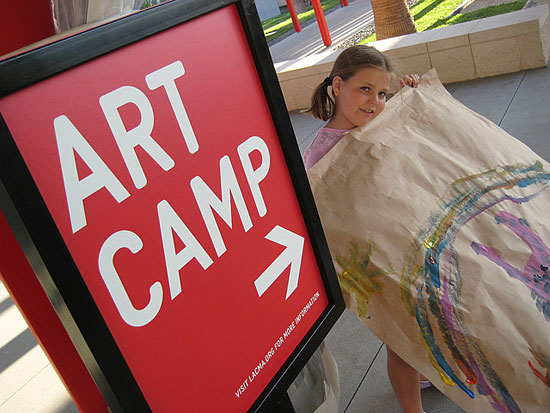
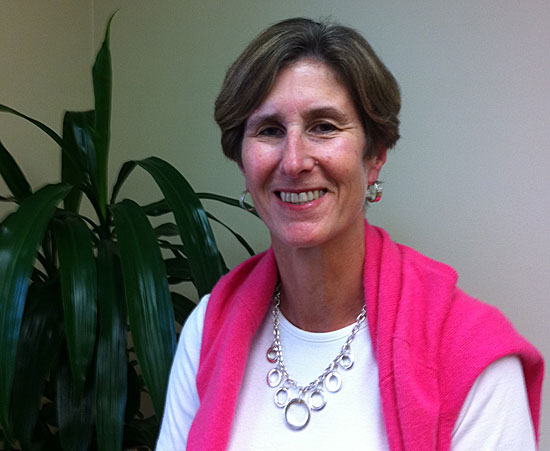







 405 bridge work causes a stink
405 bridge work causes a stink

